Sharing Your DNA: What People Think Around the World

This article explores the ways that public trust can be built by scientists who collect and share DNA data. Over 36,000 people across 22 countries shared their views, helping researchers better connect with the communities they serve.
This article has been written as part of the Young Editors of Science (YES) project. The project turns complex scientific papers into clear, engaging articles for young readers aged 10 and up. Using AI tools like ChatGPT and feedback from young reviewers, we make cutting-edge research accessible and fun to explore.
This article is based on global research by Richard Milne and colleagues at the Wellcome Sanger Insitute.
Key terms
DNA
(deoxyribonucleic acid) A molecule that carries the genetic information necessary to build and maintain an organism.
DNA sequencing
The process of determining the order of bases in a section of DNA.
Genome
The complete set of genetic instructions required to build and maintain an organism.
Database
A place on a computer where large amounts of information are safely stored and organised so it can be easily searched and used later.
What is DNA and why are scientists interested in it?
DNA (which stands for deoxyribonucleic acid) is found in all living things, such as humans, animals, insects, and plants. It provides a one-of-a-kind set of instructions that tells our bodies how to grow, repair themselves, and stay healthy. It’s like a giant recipe book stored in almost every cell of your body. DNA is what makes you, you! The complete set of DNA instructions used to make a living thing is called a genome.
DNA is made up of 4 chemical “letters”: Adenine (A), Thymine (T), Guanine (G) and Cytosine (C). These letters are the start of a code or instructions that make living things work properly. The order of the letters is important – if they get changed then the instructions can change. For example, the letters CTG mean something different to TCG.
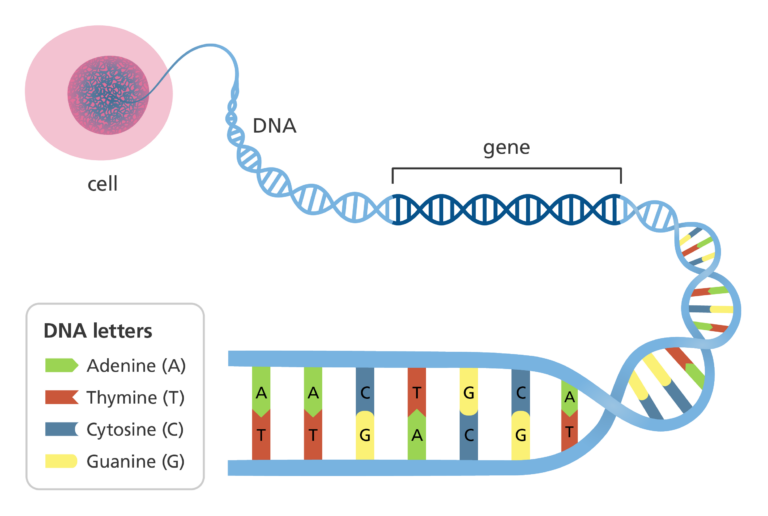
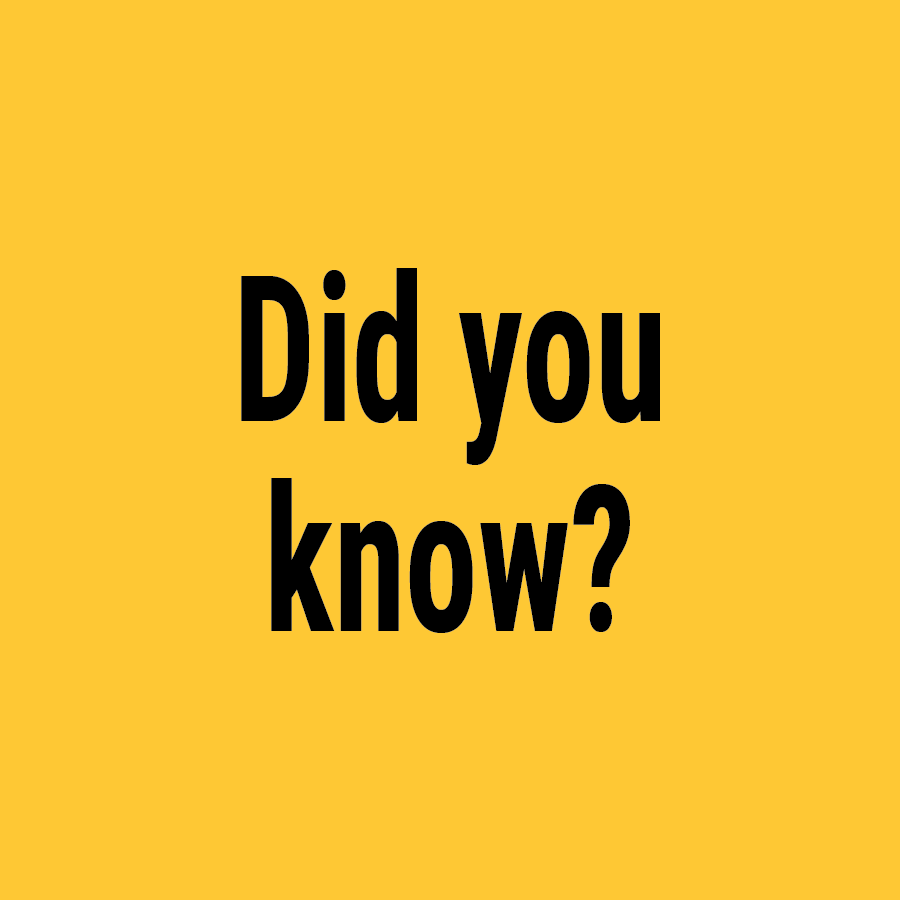
The human genome is made up of 3 billion DNA letters. That's a lot of information!
Pieces of DNA which give these ‘instructions’ are known as genes. Genes (along with other things like our environment and diet) can play a role in how we look and how our bodies work. They can also play a role in whether we get ill or not. Our DNA is passed down from our parents, so we can share those features with them. Have you ever heard anyone say you have your mum's eyes or your dad’s nose?
If the order of the DNA letters in a gene changes, this can sometimes affect how our body works. It could decide whether we have blue eyes or brown eyes, or whether we have curly hair instead of straight hair. It could mean we are more likely to get certain illnesses. This is why scientists are interested in studying our DNA – it helps them to understand how the human body works, what can make us sick, and possibly how to make new medicines to treat diseases.
How scientists get our DNA
To study and understand our DNA and health, doctors and scientists need data – information that helps them learn how our bodies work and how to find, prevent, or treat illnesses. For a scientist to get DNA data we need to give a sample of our saliva (spit), or sometimes blood. The DNA is taken from our cells and put into a machine called a DNA sequencer, where the DNA is turned into information or data – basically a lot of A’s, C’s, T’s, and G’s. This data is stored in databases that can be used by doctors and scientists.
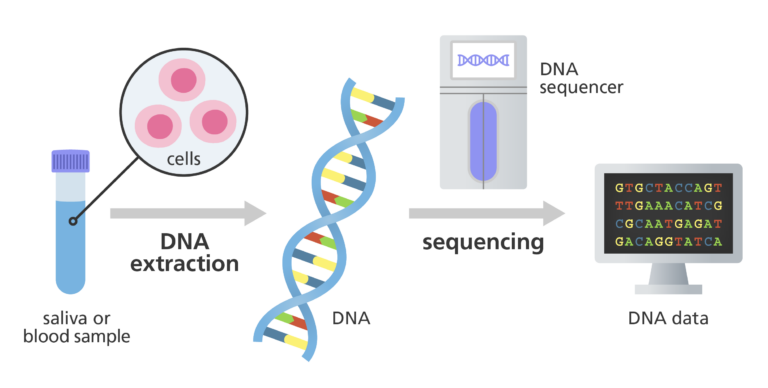

Over 200 research projects around the world have DNA information from 52 million people – that’s almost as many people as live in the entire UK! Half of that comes from the USA, and in the UK, the Our Future Health project already includes DNA from 2 million people.
Why do you need trust?
When scientists collect DNA, it’s like asking people to share something personal about themselves – like their height, eye colour, or even if they have a disability. People usually want to know that this data will be handled with care and used for good reasons, like helping doctors treat illnesses or creating new medicines.
Imagine that you’re sharing a secret with someone. You’d want to make sure that you could trust them, and that they wouldn’t share your secret with anybody else. It’s the same with DNA. People want to know that scientists will use their DNA sensibly and won’t do anything unfair, like using it in ways they didn’t agree to.
If scientists and other companies collecting DNA are clear about what they’re doing and how they’ll use it, people feel safer and more comfortable sharing. But if the scientists aren’t clear, people might worry that their DNA could be used in ways they wouldn’t like or understand. This is why trust is so important – it helps people feel comfortable that their data will be used to make a difference in the world, not for anything bad or careless.
By showing that they are honest and have good ideas, scientists can encourage more people to share their DNA. And when more people share, it helps researchers make discoveries faster and improves everyone’s health.
How scientists learnt about trust
To understand what makes people trust them, scientists set up a huge survey, which is a set of questions where the answers provide important data. They called it "Your DNA, Your Say." More than 36,000 people from 22 different countries, including the UK, Japan, Brazil, and Egypt, answered questions online about how they feel about sharing DNA.
The scientists didn’t just ask random questions – they worked hard to make their survey easy to understand, so everyone could answer, even if they didn’t know much about DNA before. They also showed short videos to explain how DNA sharing works and why it’s important.
Here are some of the questions they asked:
- What kind of information would make you feel more comfortable about sharing your DNA?
- Would you want to know who is using your DNA, and why?
- Do you think it’s important to have rules to stop people from using your DNA for bad reasons?
Once they collected the answers, scientists looked for patterns. For example, they checked which answers were popular in different countries and found out what was most important to people. They also compared the answers to see if people in some countries thought differently from others. This helped them learn how trust works all around the world.
What did people say?
When scientists asked people from different countries what would help them feel safe sharing their DNA, they got lots of interesting answers. Here’s a closer look at what people said was important to them:

1. Be clear about rewards
Most people said they wanted to know exactly who would be helped by their DNA. For example, they wanted to know if it would help doctors learn how to treat illnesses better, if it would help other patients get the right medicines, or if it would help businesses make money. People thought it was fair to share their DNA if it meant helping others or making the world healthier, but they wanted to make sure the right people were rewarded.

2. Choice to say no
Lots of people said they’d feel more relaxed sharing their DNA if they could change their minds later. Imagine agreeing to join a club and then deciding it’s not for you – you’d want to quit, right? That’s how people feel about sharing their DNA. If they decide they don’t want to share it anymore, they’d like to have the choice to remove it.
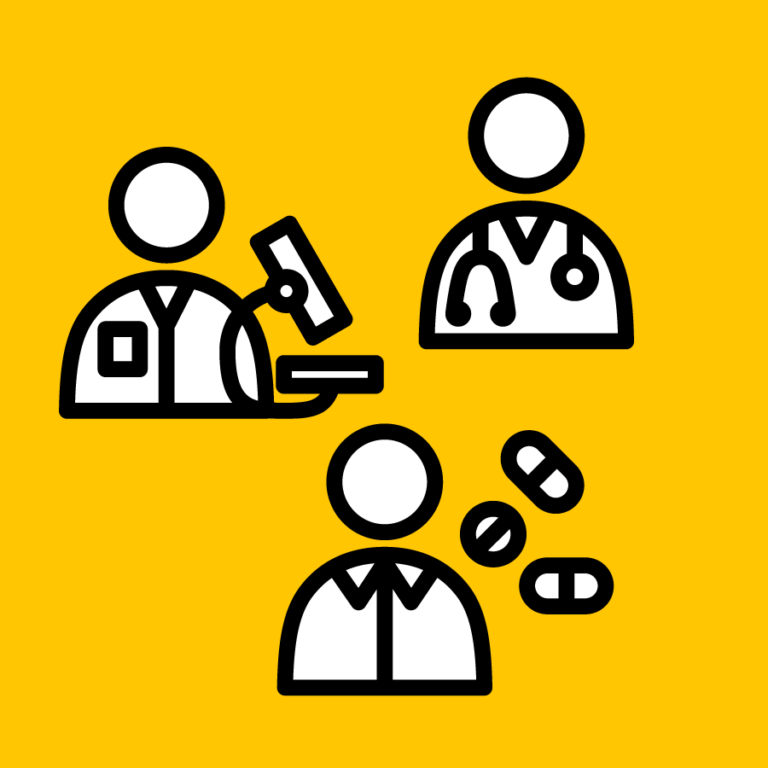
3. Knowing who’s using it
People also said it was important to know exactly who would use their DNA, and why. For example, is it just doctors and scientists? Or could big companies or strangers get access too? Knowing this information would help them feel safer and more in control of their decision.
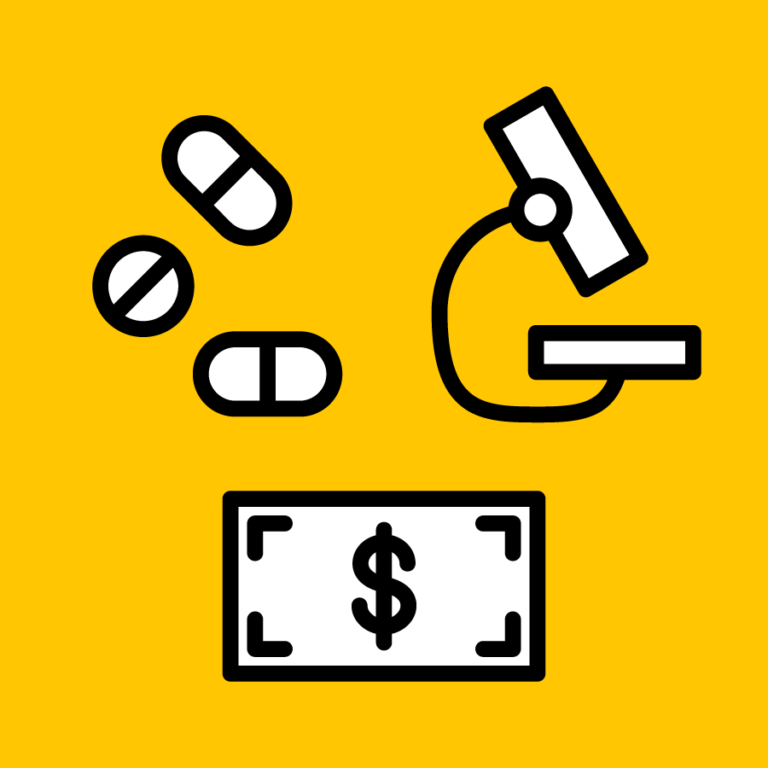
4. How others benefit
People wanted to know how sharing their DNA might help others. For instance, would it help a scientist understand diseases? Would it lead to new medicines? Or would it just help a company make more money? They thought it was important to be told all of this in an honest and clear way.
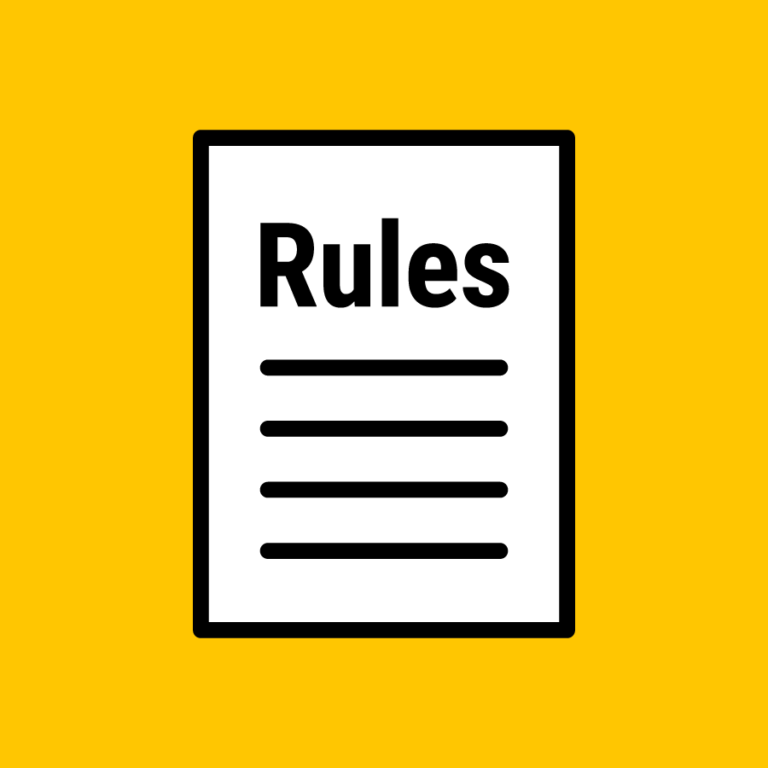
5. Rules to stop misuse
Some people worried about what could happen if their DNA was used in the wrong way. For example, what if someone used it without permission or for something they didn’t agree to? They said it would help to have clear rules or punishments for anyone who misused the data.
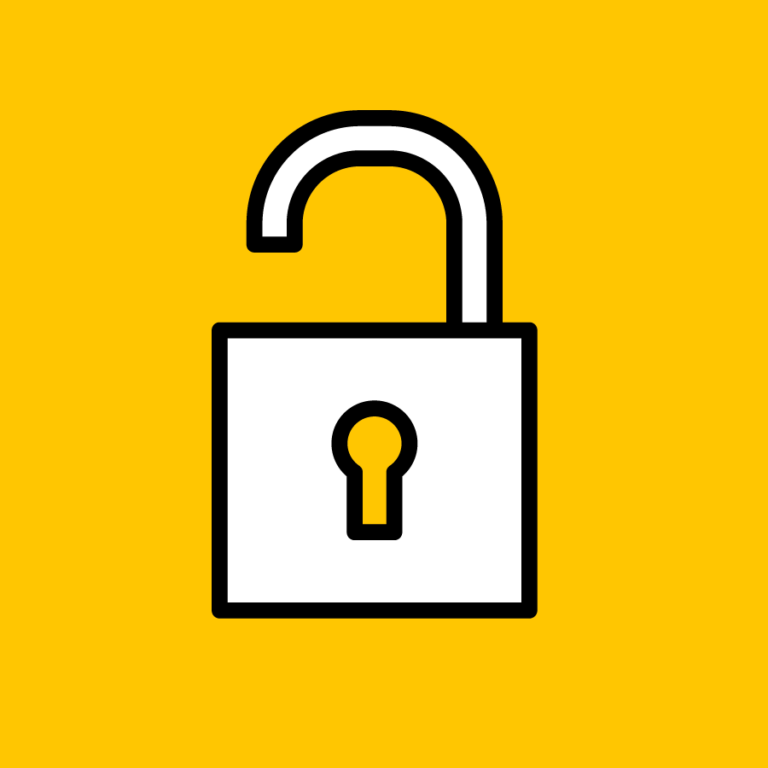
6. Access to their own DNA
A few people said they’d like to be able to look at their own DNA if they wanted. Some people feel that finding out about their own DNA could help them understand more about themselves.
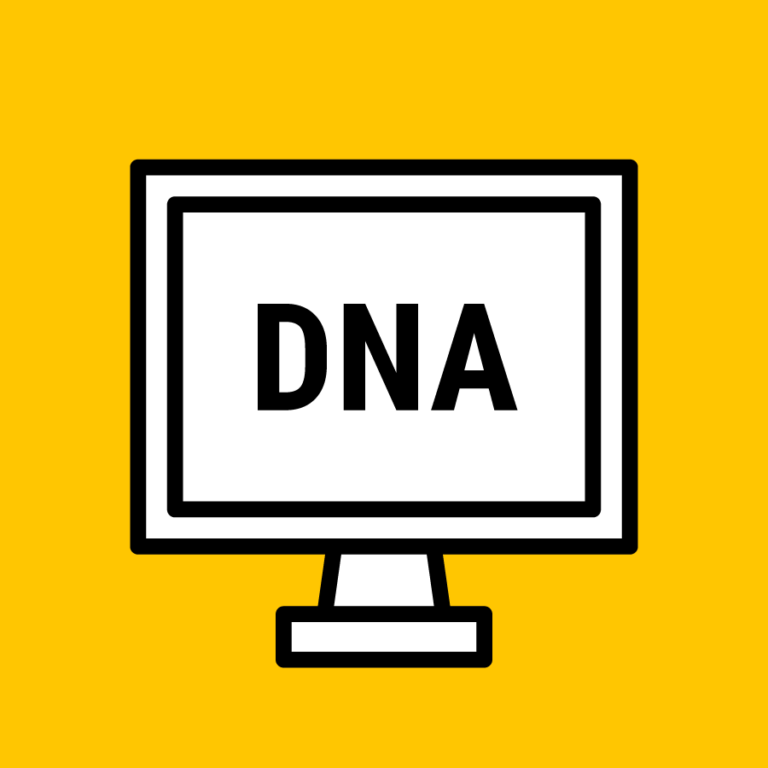
7. Websites and information
Some people said it would be helpful to have a website where they could learn more about how their DNA is being used.
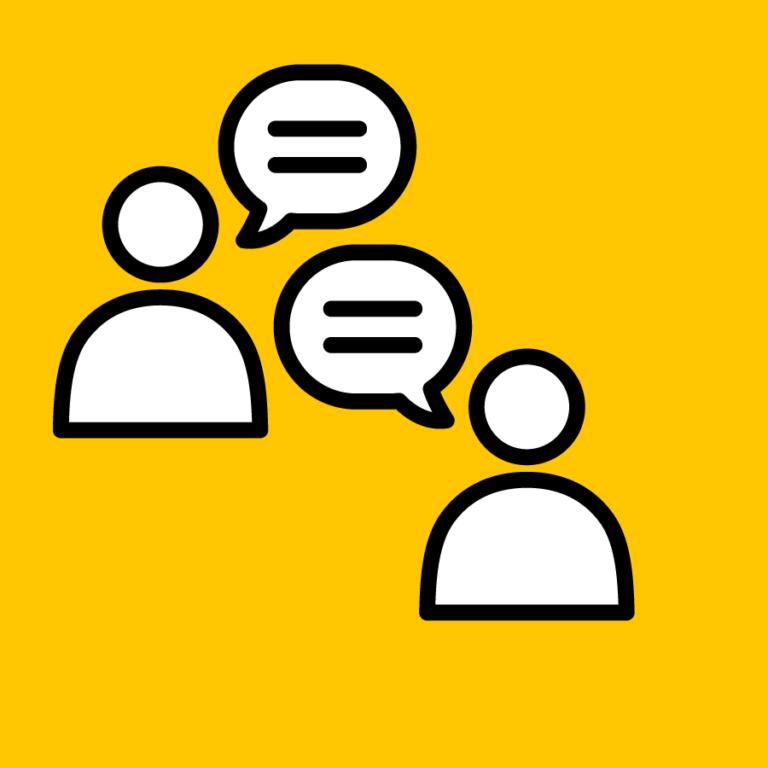
8. Talking to DNA experts
A smaller number of people thought it would be useful to talk directly to the people handling their DNA. For example, they might want to ask questions about how their data is being stored or used. While not as many people said this was really important, it shows that some want extra information.
Different countries, different ideas
Not everyone agreed on what was most important. For example:
- In countries like the UK and Canada, many people wanted to know they could remove their information anytime. This made them feel more in control and safer about sharing their DNA.
- In Japan, people cared a lot about making sure there were punishments for anyone misusing their DNA. They thought clear rules would stop bad things from happening.
- In China, people were less focused on these rules and more interested in understanding how their DNA would be used to help others.
- Countries like Russia and Egypt had their own different opinions, too. Some people wanted more chances to talk directly with scientists, while others were curious about who would benefit the most.
These differences show how people’s culture, rules, and experiences can shape what they care about when it comes to sharing DNA. It also means scientists need to think carefully about what matters most to each country so they can build trust everywhere.
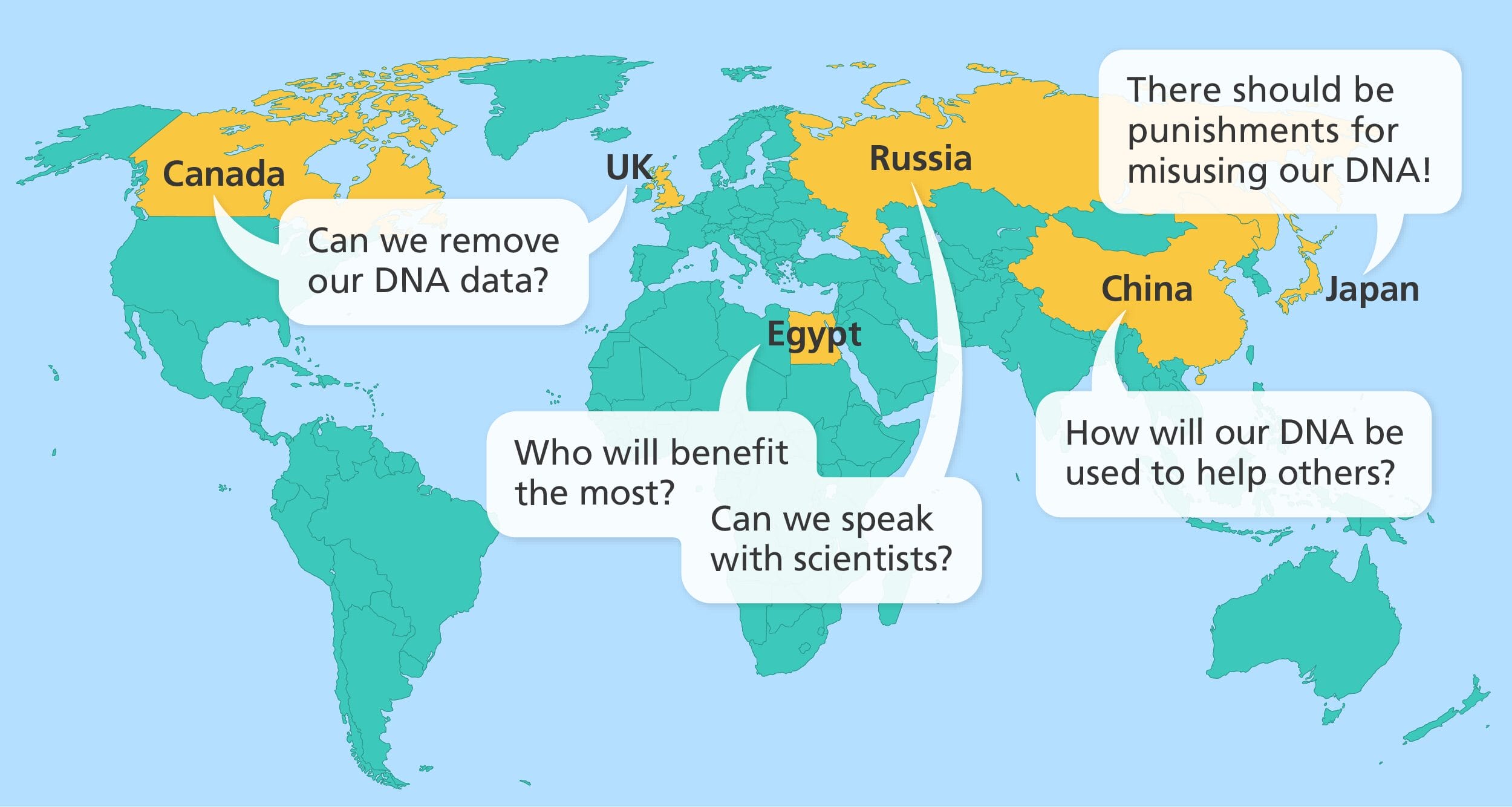 Map of the world with what people from different countries care about when sharing their DNA data. Image credit: Laura Olivares Boldú / Wellcome Connecting Science
Map of the world with what people from different countries care about when sharing their DNA data. Image credit: Laura Olivares Boldú / Wellcome Connecting Science
How scientists explain DNA, and how it is used
The researchers learned that people everywhere want scientists to be honest and clear about how DNA will be used. This means scientists need to explain their work in simple ways so everyone can understand it, even if they don’t know much about DNA. They should also make sure people know who is using their DNA, and why. For example, is it being used to create medicines, study illnesses, or for another reason?
Scientists should also set up strong rules to protect people’s DNA from being misused. This includes having punishments for anyone who breaks the rules. Another thing scientists can do is show people how sharing DNA can lead to big discoveries, like finding cures for diseases or making healthcare better for everyone. By listening to people’s worries, scientists can show they can be trusted with people's DNA and can use it to do even better science!
Why is this important?
If people know that scientists can be trusted, they might be more willing to share their DNA. This can help to make breakthroughs in medicine and healthcare. Looking at sharing DNA also helps scientists understand how our bodies work.
This study shows that trust is really important. By being open and clear, scientists can show people that they can be trusted with DNA to use in science to make the world a healthier place!
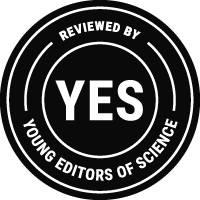
Special thanks to the students of Shelford Primary School, acting as our young reviewers, to make this research accessible.